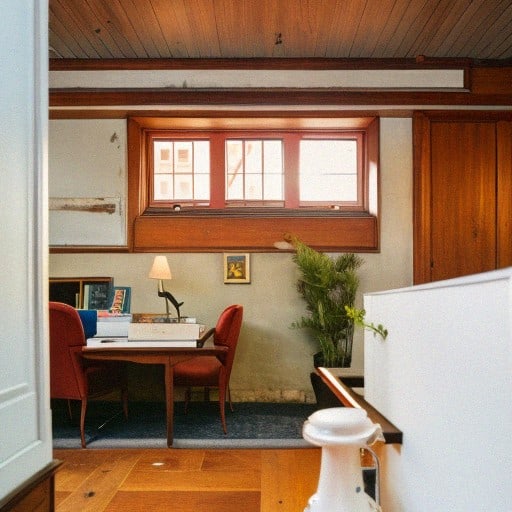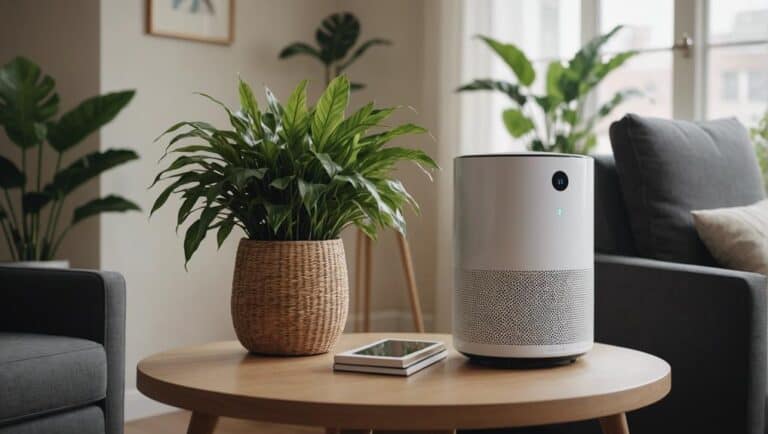Optimizing Airflow: Effective Strategies to Increase Ventilation on the Second Floor
Proper airflow and ventilation are essential for maintaining a healthy and comfortable living environment, especially on the second floor of a building. However, this area often poses unique challenges due to its elevated positioning and limited access to fresh air sources.
In order to optimize airflow on the second floor, it is crucial to implement effective strategies that address these specific obstacles. This article explores various techniques and solutions that can significantly increase ventilation in such spaces, ensuring improved air quality and promoting overall well-being for occupants.
From utilizing window placements strategically to introducing mechanical systems like exhaust fans or HVAC modifications, this comprehensive guide will provide invaluable insights for homeowners or property managers looking to enhance their indoor air circulation on the second floor.
Evaluating the Current Airflow Situation
Before implementing any strategies to optimize airflow on the second floor, it’s crucial to assess the current situation. Here are a few steps you can take:
- Check for obstructions: Walk around each room on the second floor and inspect all air vents, windows, and doorways for any blockages or obstacles that may be hindering proper airflow.
- Assess ventilation equipment: Evaluate the effectiveness of your current ventilation system by examining its age, maintenance history, and performance. Ensure that filters are clean and not clogged as this can impede airflow.
- Measure air quality: Conduct an air quality analysis using specialized equipment to identify potential issues like high levels of humidity or contaminants such as mold spores or allergens.
Taking these initial steps will help you gain a better understanding of your existing airflow conditions before determining which optimization strategies need to be implemented in order to increase ventilation on the second floor.
Identifying Obstacles to Effective Ventilation
- Insufficient windows: One obstacle to effective ventilation on the second floor is a lack of sufficient windows. Windows are essential for allowing fresh air into the space and promoting airflow. If there are not enough or too small of windows, it can impede proper ventilation.
- Poorly positioned furniture: Another obstacle is poorly positioned furniture that obstructs airflow paths and prevents air from circulating effectively throughout the room. Furniture should be arranged in a way that allows for unrestricted movement of air, particularly near windows or vents.
- Limited access to external factors: Lack of access to external factors such as natural breezes can also hinder proper ventilation on the second floor. If the building is surrounded by tall structures or trees, it may block natural airflow patterns and limit fresh air intake.
- Inadequate insulation: Insufficient insulation can lead to temperature imbalances between different floors, discouraging adequate airflow from reaching the second floor. This imbalance causes rooms on upper levels to become stuffy and hot while other areas remain cool, making overall ventilation less effective.
- Improper maintenance: Neglecting regular maintenance tasks like cleaning filters or clearing clogged ducts can create obstacles that affect efficient ventilation systems’ functioning in place.
Utilizing Natural Ventilation Techniques
Natural Ventilation Techniques for Increased Airflow
Utilize cross ventilation:
- Open windows and doors on opposite sides of the room to create a flow of fresh air.
- This allows for a natural exchange of stale indoor air with fresh outdoor air, improving overall air quality.
Position furniture strategically:
- Arrange furniture in a way that does not obstruct the airflow.
- Avoid placing large pieces of furniture near windows or doors as they can block the path of natural ventilation.
Install ceiling fans:
- Ceiling fans can help circulate and distribute cool air throughout the second floor.
- They work effectively in conjunction with open windows, promoting better airflow and reducing reliance on artificial cooling options.
Installing Proper Ventilation Systems
Installing proper ventilation systems is crucial for optimizing airflow and increasing ventilation on the second floor. There are several effective strategies that can be implemented to achieve this goal:
- Install exhaust fans: Exhaust fans help remove stale air and odors from the second-floor rooms, promoting better circulation of fresh air. These fans should be strategically placed in areas with high humidity or where pollutants tend to accumulate, such as bathrooms, kitchens, or laundry rooms.
- Use ceiling fans: Ceiling fans can greatly enhance air movement and create a cooling breeze on the second floor. They should be installed in bedrooms and living areas to improve comfort levels while reducing reliance on air conditioning.
- Consider window ventilation: Opening windows on opposite sides of a room creates cross ventilation by allowing fresh air to enter through one window while pushing out stale air through the other. This simple method helps increase airflow throughout the space.
By implementing these strategies, homeowners can significantly optimize airflow and improve ventilation on their second floors without compromising energy efficiency or indoor comfort levels.
Enhancing Air Circulation with Ceiling Fans
Installing ceiling fans on the second floor is a cost-effective way to improve air circulation and increase ventilation.
- Positioning: Place the fan in the center of the room to ensure optimal air distribution.
- Speed settings: Adjusting the fan’s speed can help control airflow and create a cooling effect.
- Combined usage: Using ceiling fans in conjunction with open windows or doors can enhance cross-ventilation, allowing fresh air to circulate throughout the space.
Ceiling fans are not only energy-efficient but also versatile in their functionality. By strategically installing these fixtures, homeowners can optimize airflow on their second floors while reducing reliance on expensive air conditioning systems.
Optimizing Window Placement for Ventilation
- Strategic window placement: When considering ventilation on the second floor, it’s important to strategically place windows in areas that allow proper airflow. Look for opportunities to position windows opposite each other or at different heights to create a natural flow of air throughout the space.
- Cross-ventilation benefits: Cross-ventilation is an effective strategy for maximizing airflow on the second floor. By opening windows on opposite sides of a room or hallway, you can create a pathway for fresh air to enter and stale air to exit, effectively circulating and refreshing the indoor environment.
- Consider landscape features: Another factor that can influence window placement is the surrounding landscape. If possible, position windows where they can take advantage of natural breezes from nearby trees or bodies of water, which can help enhance ventilation and improve overall comfort.
By carefully considering window placement during renovations or new construction projects on your home’s second floor, you can optimize airflow and increase ventilation levels significantly.
Implementing Cross Ventilation Strategies
Arrange furniture strategically:
Positioning furniture items such as bookshelves and tall wardrobes near windows can help create pathways for air to flow. By keeping these objects away from obstructing the windows, you enable fresh air to circulate freely throughout the room, thereby increasing cross ventilation.
Utilize natural wind patterns:
Understand how wind flows around your home by observing the direction it usually comes from. Open windows on opposite sides of a room or house, allowing the external breeze to enter one window while it exits through another. This harmonious interaction between indoor and outdoor airflow aids in cooling down an enclosed space effectively.
Use fans intelligently:
By strategically placing electric fans near open windows or doorways, you can encourage faster air movement inside your dwelling. Position them in such a way that they face towards the outside to draw hot air out while pulling cool air inside from different directions, enhancing cross ventilation even further.
These methods can be combined with other effective strategies mentioned earlier to maximize airflow and ensure optimal ventilation on your second floor.
Considering the Role of Air Purifiers in Airflow Optimization
The Role of Air Purifiers in Airflow Optimization
Air purifiers can play a crucial role in optimizing airflow on the second floor. By effectively removing harmful particles and pollutants from the air, these devices improve overall air quality and promote healthier living conditions.
- Air purifiers work by capturing dust, pet dander, pollen, mold spores, and other airborne allergens.
- They actively filter out volatile organic compounds (VOCs), such as formaldehyde or benzene emitted by furniture or cleaning products.
- With their ability to remove bacteria and viruses from the air, air purifiers contribute to reducing the risk of respiratory infections.
Investing in an air purifier for your second-floor space can have numerous benefits. Not only does it enhance indoor air quality but also helps prevent allergies and respiratory issues among occupants. Additionally, it complements other ventilation strategies to create a more comfortable and healthier living environment.







2 Comments